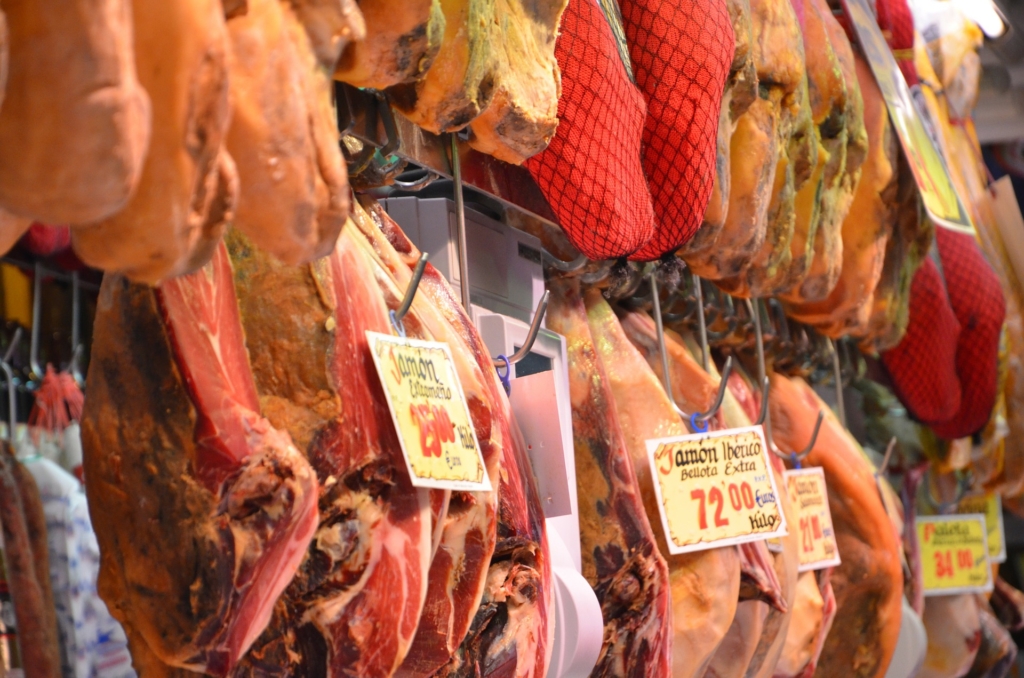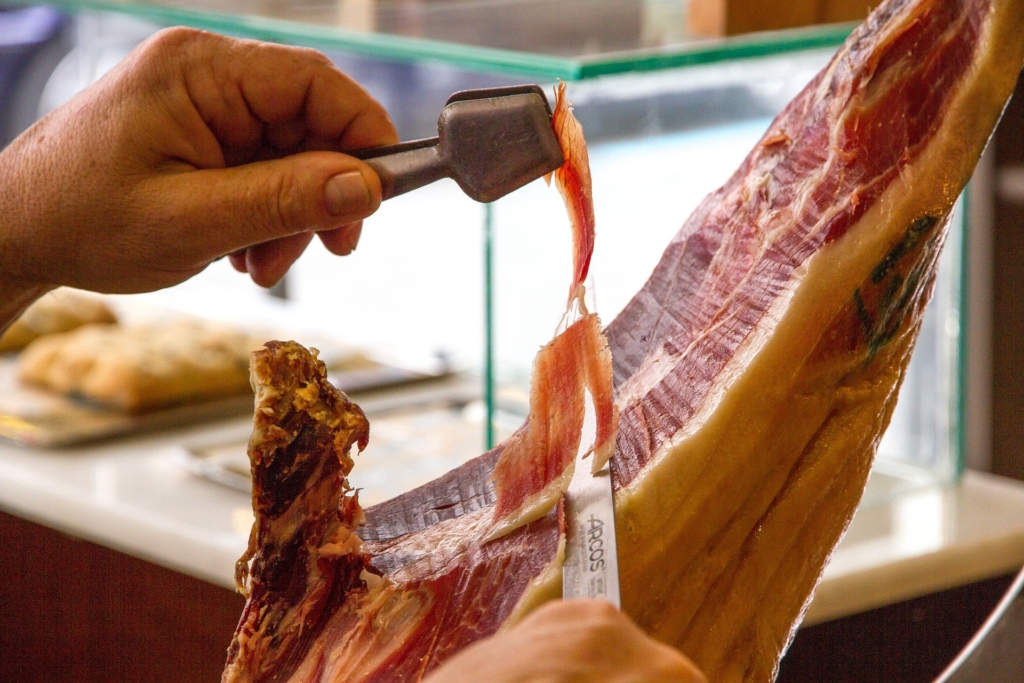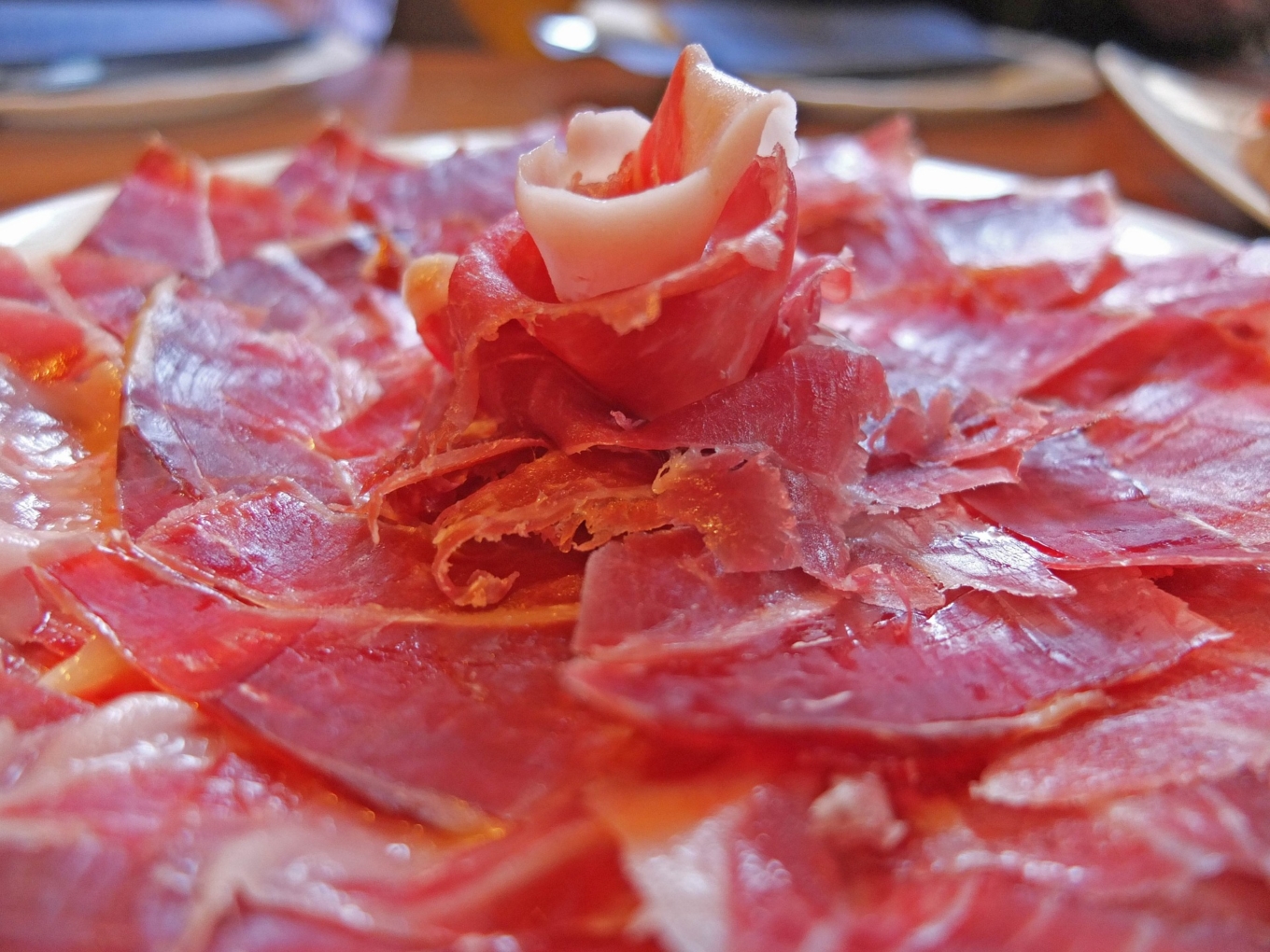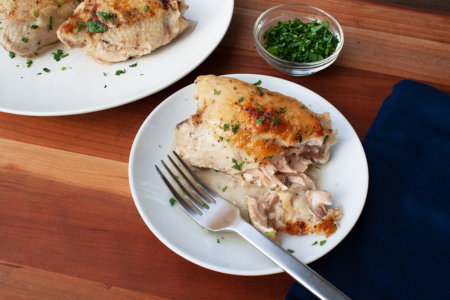History
Curing meats with salt and hanging them to dry has been essential to preserving foods for centuries. The curing process pulls moisture from the meat and transforms it from soft, opaque flesh into a firm, taught, almost candy-like texture. Only three elements are required: salt, air, and time. The meat is densely packed in salt for a week or two before being rinsed and hung to cure for six to 12 months in moderate humidity. It is then moved to a lower humidity and dried to intensify and mature the flavor for another two years or more.
Bellota Distinction

Spanish hams, in particular, are prized for their unique nutty flavor as well as the breeds and styles of their pigs. The most sought after is the Jamón Ibérico de Bellota. While most pigs are grain fed so they quickly reach their ideal weight, hams with the “bellota” distinction are allowed to forage for their food. Freely roaming the woodland meadows–known as the dehesa–of Central and Southwestern Spain, the black Iberian pigs feast on the abundant acorns falling from native holm oak and cork trees. This unique ecosystem has been maintained by humans and their livestock for hundreds of years. Oak trees dot the gently rolling grasslands which are grazed by cattle, sheep, and, of course, pigs. As broad trees, they provide shade from the intense midday sun for the animals, who in turn graze the land and keep brush and other trees from encroaching. The pigs are also uniquely able to turn the otherwise inedible acorns, which when eaten raw are poisonous to cattle, horses, and humans, into succulent, densely marbled meat. Bellota hams are recognizable by their deep dark red color and rich, creamy, yellow-tinted fat.
Preparation

The care and effort that goes into producing jamón extends to the ritual of how it is sliced. Many restaurants and bars prominently display a whole leg of jamón secured in a special vice from which impossibly thin slices are expertly carved using a long, thin knife. Served simply with bread and olives, jamón needs little adornment to demonstrate how truly special it is.
Feature Image: Gerard Casanova from Pixabay



